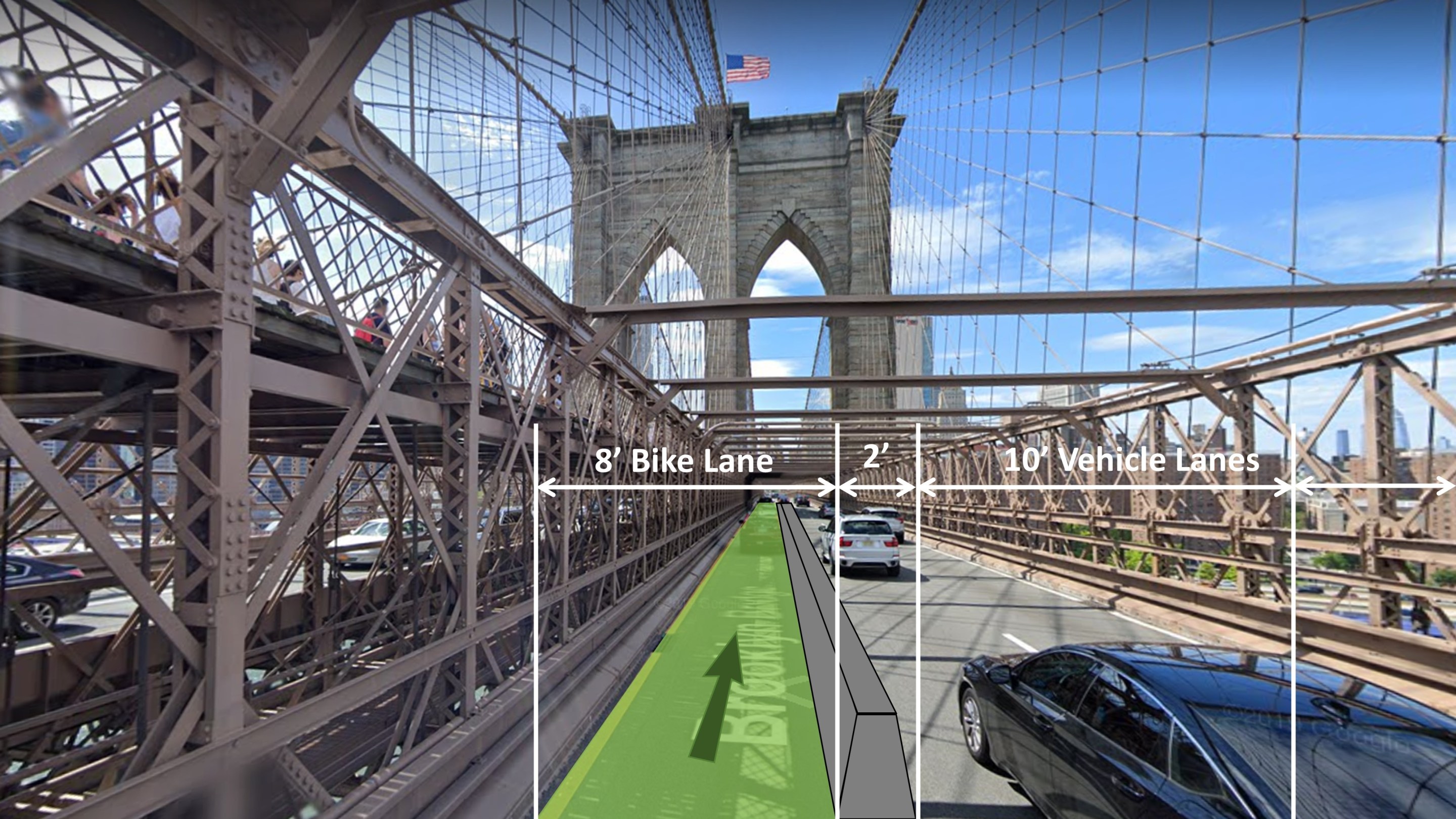Just like everyone reporting to spring training this month, the Brooklyn Bridge bike lane planning process is in the best shape of its life. But when is Opening Day?
This week, when Streetsblog asked for an update on Mayor de Blasio's revolutionary plan to put a bike lane on the Manhattan-bound roadbed of the fabled span, we received the following answer from a Department of Transportation spokesperson, who did not want a name attached to the quote:
The process is moving along really nicely. Our team is finalizing the plans we’ll be presenting to elected officials, community boards, and local stakeholders throughout the spring. This is a major change for communities on both sides of the bridge — along with cyclists across the city — and we’re not going to make it by fiat. We’re looking forward to some really productive conversations in the next few months, and the project remains on track to be completed by the end of the year.
It's the first update anyone has received in roughly a month, since Hizzoner announced that a protected, two-way lane would be fashioned from a car lane by the end of this year. Not much is known about the bike lane beyond the announcement and basic rendering of the left-most Manhattan-bound lane, but it is expected to be eight feet wide.
The process might be "moving along really nicely," but there remains some tough engineering work to do, most notably, how to turn a 10-foot-wide car lane into a protected bike lane that keeps cyclists safe. Such a car lane could be configured into an eight-foot-wide bike path with a two-foot-wide barrier.
In addition, planners will have to figure out access and egress; on the Brooklyn side, cyclists could access the bridge at Tillary Street (as many do now, albeit to use the existing bike and pedestrian path), but car drivers currently enjoy two Manhattan-bound lanes there. On the Manhattan side, cyclists would need to get safe passage from the reconfigured car lane to existing bike infrastructure along Park Row. There is no safe infrastructure heading north from the bridge.
"It's not as simple as laying down some Jersey barriers," said Street Plans co-founder Mike Lydon. "There is an increasing elevation change between the bridge roadway and the existing promenade/ bike path as well as the DUMBO stair access to contend, and the on-ramp merge to design around."
Still, some bike activists who've campaigned for bike lanes on the roadbed of every East River bridge are pushing for more than what looks like a tight eight feet on the bridge.
"Eight feet isn't enough for a two-way lane on a steep slope," tweeted Blythe Austin, whose group, Bridges4People, wants two car lanes of the bridge converted for cyclist use.
That’s why @bridges4people is calling for the conversion of two vehicle lanes on the Brooklyn Bridge. Eight feet isn’t enough for a two-way lane on a steep slope. https://t.co/hEZe0HxKR7
— Blythe Austin (@bblytherss) February 26, 2021
This week's statement by the DOT is the first glimpse at a schedule for the historic bike path, but advocates are hoping that community input doesn't end up feeding the whole plan into a wood chipper.
"Peak cycling is coming back and we will be seeing the renewal of the bike boom in terms of volume in a matter of weeks, not months, so let's get going," said Bike New York Communications Director Jon Orcutt. "I don't see what tweaks a community board will make to this. We should notify people what's going to happen, give us some information how we're supposed to get on the bridge, and let's go."
Any delay makes no sense in terms of traffic patterns on the bridge. Car trips on the bridge fell by 35 percent between 2000 and 2016, and congestion pricing, which will reduce car trips across the bridge even more, is receiving positive attention from the federal government. On the other hand, bike trips across the bridge rose by 195 percent between 1980 and 2019, despite the fact that the only way across was the cramped shared path that had cyclists and pedestrians spiking each other's blood pressures.
"New York City is in the middle of a bike boom that shows no sign of slowing down," said Transportation Alternatives Director of Organizing Erwin Figueroa. "This much-needed infrastructure, once installed, will be an important way for City Hall to meet the moment and we hope the new bike lane over the bridge is completed without delay."
All of which suggests that the city should move sooner than later on revealing and actually installing the bike lane, to take advantage of a population shake off the beatdown it received from winter and return to the streets.
"We would hope for this during a high cycling season, anybody who cares about the project inside city government should want that too," said Orcutt.






